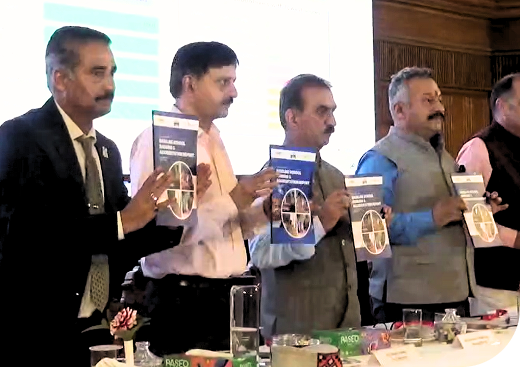The Chief Minister of Himachal Pradesh, Shri Sukhvinder Singh Sukhu, launched four new initiatives aimed at strengthening transparency and accountability in the state’s school education system. These include the CM Dashboard, the Integrated Dashboard Platform (IDP), the Baseline School Ranking & Accreditation Report 2025–26, and enhancements to the Smart Attendance System with geo-tagging and geo-fencing capabilities.

Launch of Key Initiatives by Hon’ble Chief Minister under Vidya Samiksha Kendra, Himachal Pradesh.
The launch ceremony, held at The Peterhof in Shimla, was attended by Hon’ble Education Minister Shri Rohit Thakur, Secretary of School Education Shri Rakesh Kanwar, State Project Director Dr. Rajesh Sharma (IFS), and other senior officials.
The CM Dashboard, developed through the Vidya Samiksha Kendra, Himachal Pradesh, provides real-time data on ten key school indicators, such as school registration, student and teacher enrolment, attendance monitoring, digital learning participation, and examination results. Its purpose is to offer a consolidated information system to support timely policy decisions. The Chief Minister’s Office will review the dashboard regularly, ensuring data-based planning and strengthening the process of administrative intervention.
The Integrated Dashboard Platform (IDP) has also been launched at the state level to empower decentralized decision-making in education administration. It provides district officials, such as District Project Officers, Deputy Directors (Quality Control), DIET Principals, and District MIS Coordinators, with consolidated dashboards to analyze school-level information. These dashboards include data on learning outcomes, resource distribution, digital learning engagement, infrastructure status, and human resources, enabling districts to set clear priorities.
The Baseline School Ranking & Accreditation Report 2025–26 was also released, marking a step toward evidence-based evaluation of government school quality. Based on UDISE+ 2023–24 data, 14,663 government schools were assessed on six parameters, learning levels, physical resources, governance, inclusion, teacher development, and access. Separate evaluation models for primary and secondary schools ensure fair comparisons. The goal is not only to publish rankings but also to serve as a guiding tool for school improvement. Schools rated ‘A+’ have been identified as model schools, while those in ‘C’ and ‘D’ categories require immediate interventions. Five government schools were highlighted for their exemplary performance.
Enhancements to the Smart Attendance System now include geo-tagging and geo-fencing, enabling more accurate and transparent location-based recording of teacher, staff, and student attendance.
Through these initiatives, the Himachal Pradesh government is demonstrating a clear commitment to technological innovation and data-driven governance as central pillars of education reform. When thoughtfully implemented and sensitively monitored, these dashboards and attendance systems hold the promise of not only strengthening transparency and accountability but also advancing evidence-based policymaking at both district and state levels. The true measure of their success, however, will lie in how effectively these tools are translated into everyday practice at the grassroots—empowering schools, teachers, and students alike to benefit from a more responsive and equitable education system.
Read More from
ConveGenius






